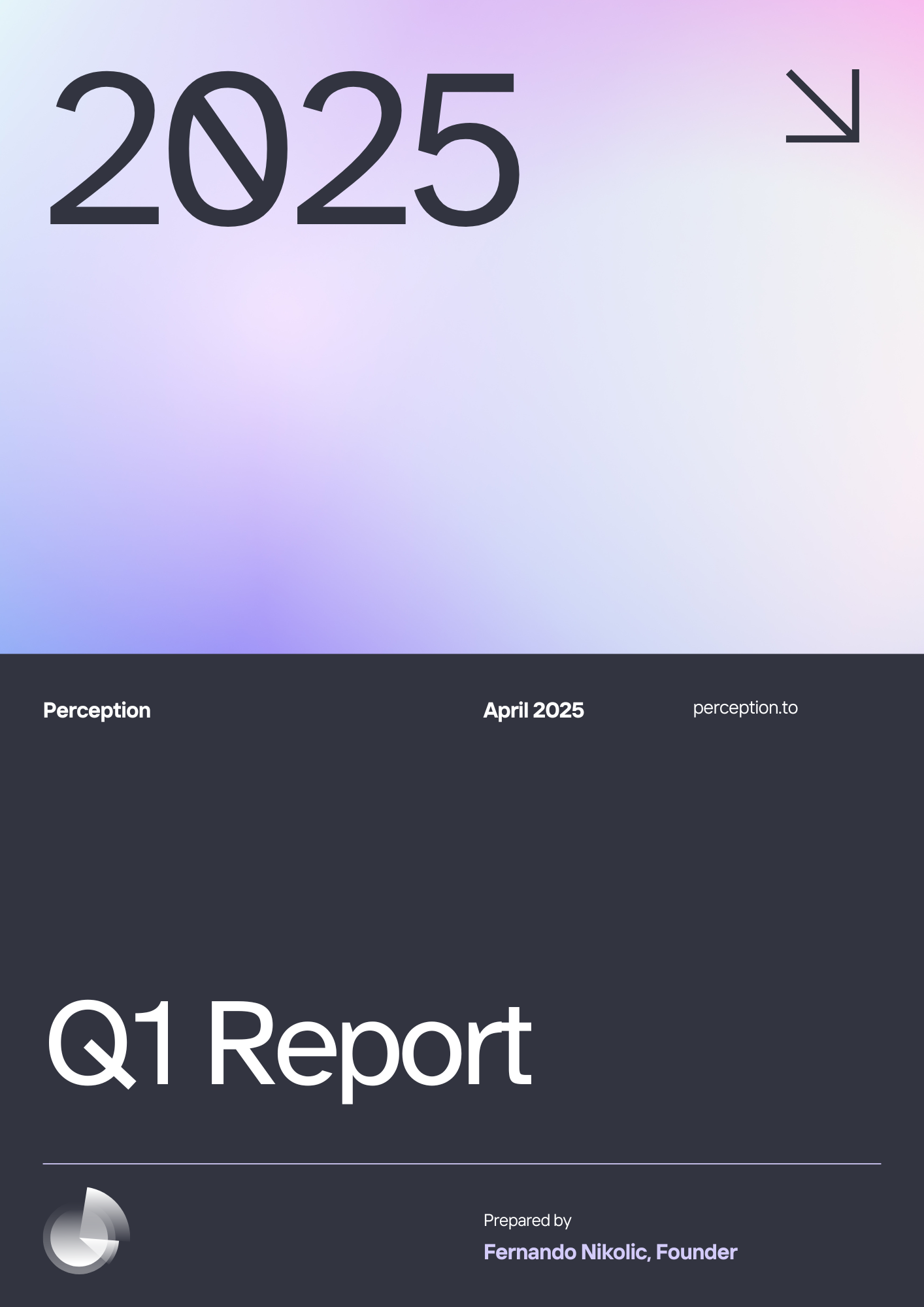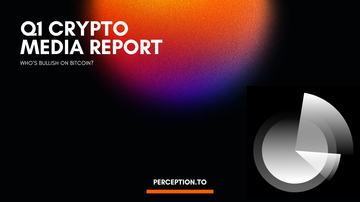Date Range: January 1 – March 31, 2025
Executive Summary
Q1 2025 was defined by a tension between institutional fatigue and grassroots resurgence. Major announcements like the U.S. Strategic Bitcoin Reserve (SBR) and Bitcoin briefly crossing the $100,000 mark marked narrative peaks early in the quarter, but institutional interest waned quickly thereafter. In contrast, retail and cultural themes—especially self-custody and use cases—gained traction.
Media sentiment fluctuated sharply, with a low point in January coinciding with Trump’s inauguration. Bloomberg notably corrected its tone in March after a particularly negative February.
Meanwhile, Forbes led with the most positive coverage, and the Perception Index hinted at a possible decoupling from market price trends.
Key Narrative Themes
1. Self-Custody Surges Post-SBR Announcement
- The announcement of the U.S. Strategic Bitcoin Reserve on March 2 triggered a sharp rise in self-custody discourse.
- Reddit and developer communities focused on wallet setup, hot vs. cold storage, and sovereign ownership themes.
- This spike represents a renewed grassroots emphasis on individual control over Bitcoin assets.

2. Institutional Interest Pullback After BTC Hits $100K
- Institutional adoption narratives grew steadily through Q4 2024 but contracted following major milestones (BTC > $100K and SBR news).
- Topics such as mining, market analysis, and investment vehicles all saw similar downturns.
- Retail adoption topics, in contrast, bounced back in Q1, showing growing traction from the ground up.
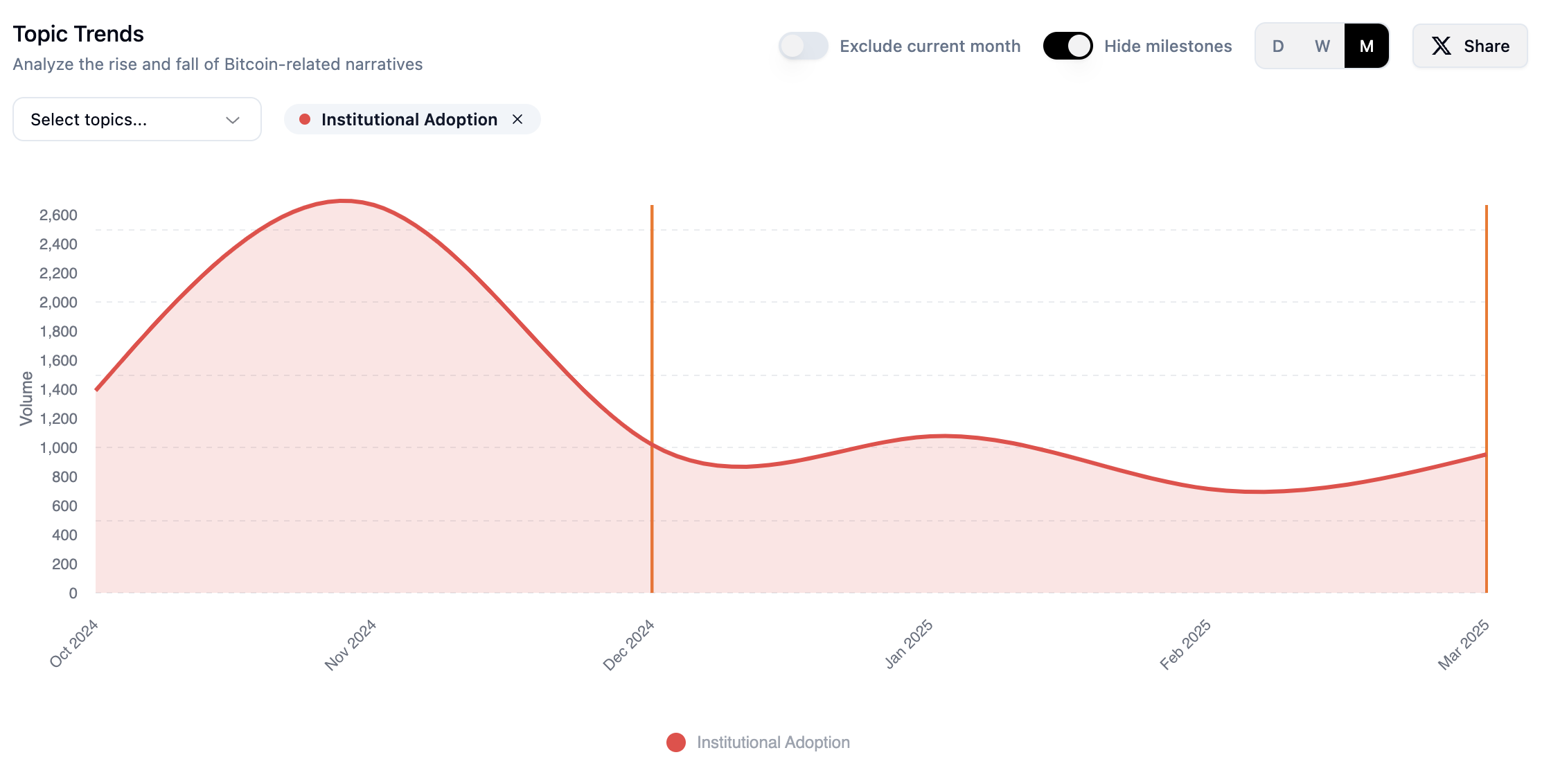
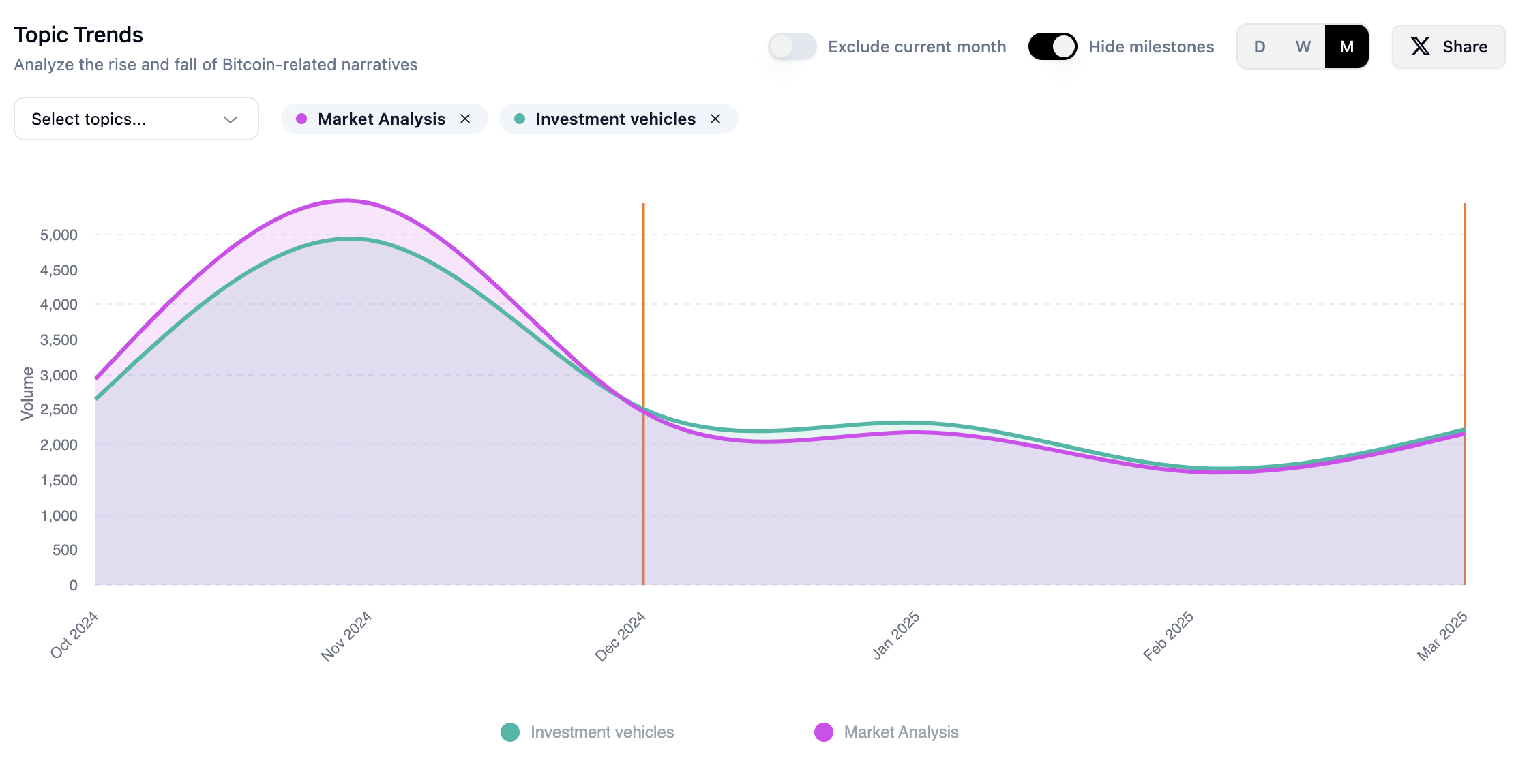
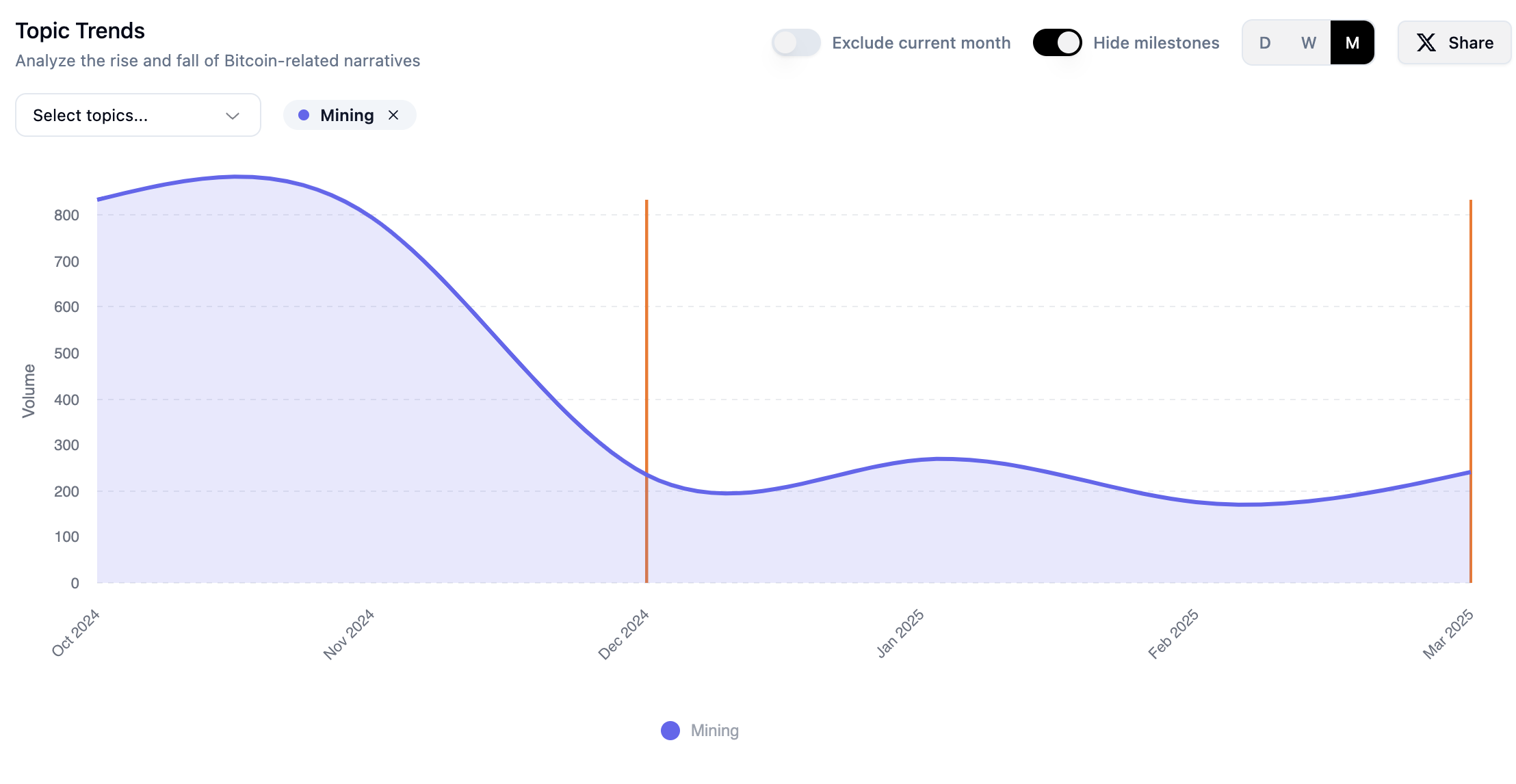
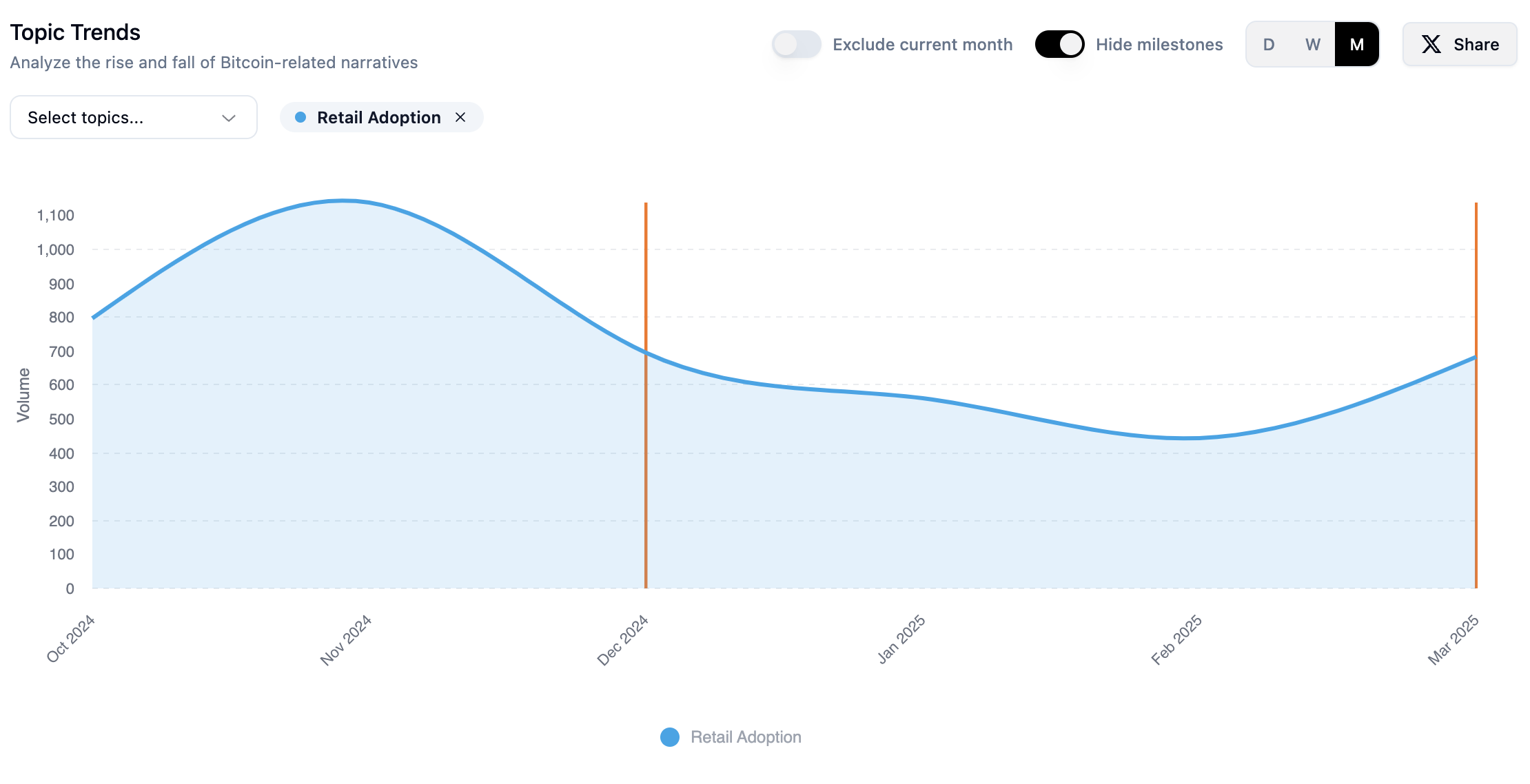
3. Regulatory Coverage Outpaces Scaling
- Regulatory updates became one of the most discussed topics in both crypto and mainstream outlets.
- Compared to Lightning and broader scaling discussions, regulatory friction drew more sustained interest, particularly from CNBC, Forbes, and Financial Times.
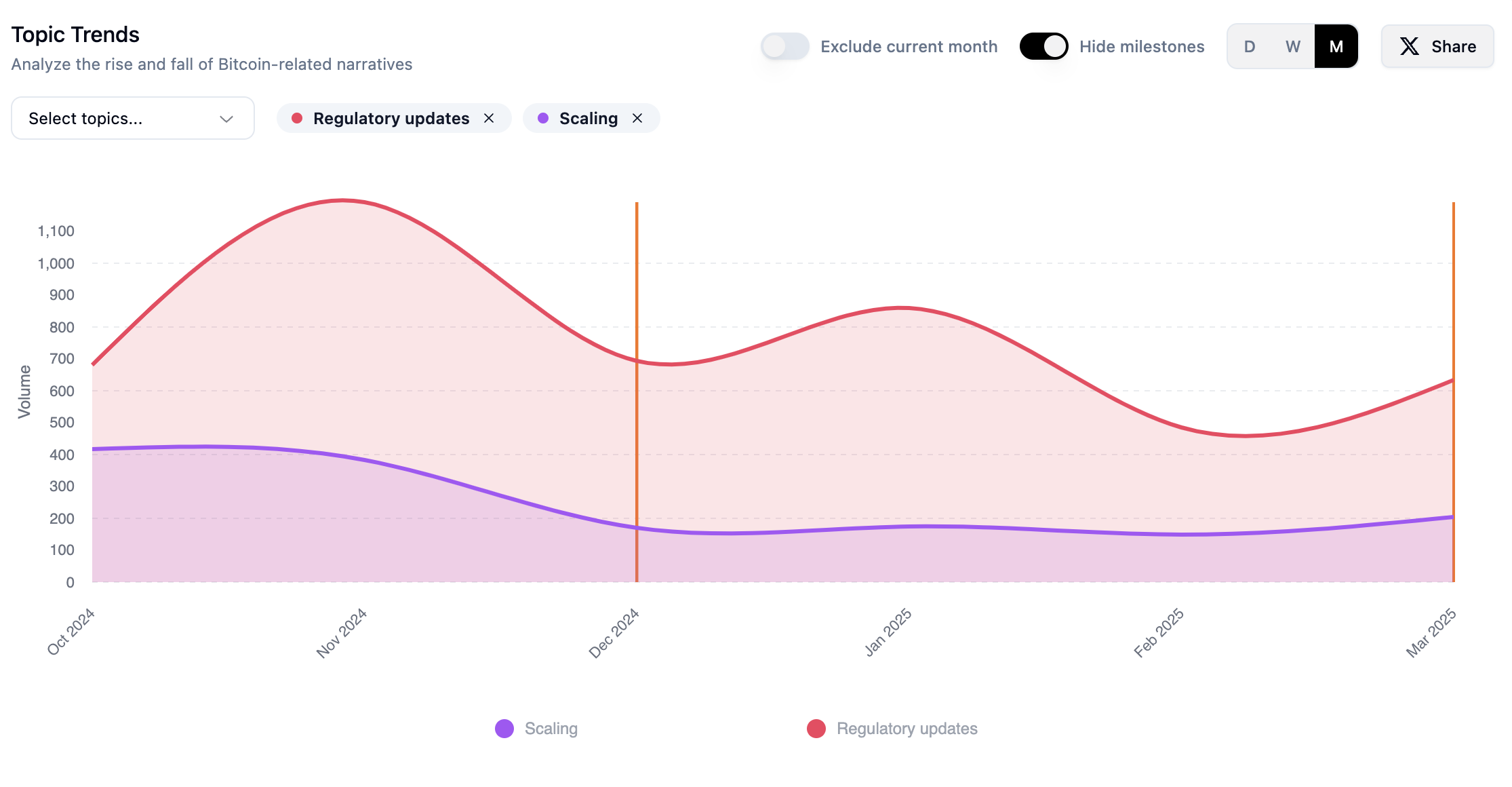
Sentiment & Media Breakdown
Sentiment Trends
- January saw the lowest monthly positive sentiment in six months at 17%, coinciding with Trump’s inauguration.
- February saw a bounce, but March ended slightly lower, indicating a broader cooling of attention.

Outlet-Specific Sentiment & Focus Areas
Bloomberg
- Pulled back coverage in Feb–Mar
- March: 0% negative coverage, indicating tone correction
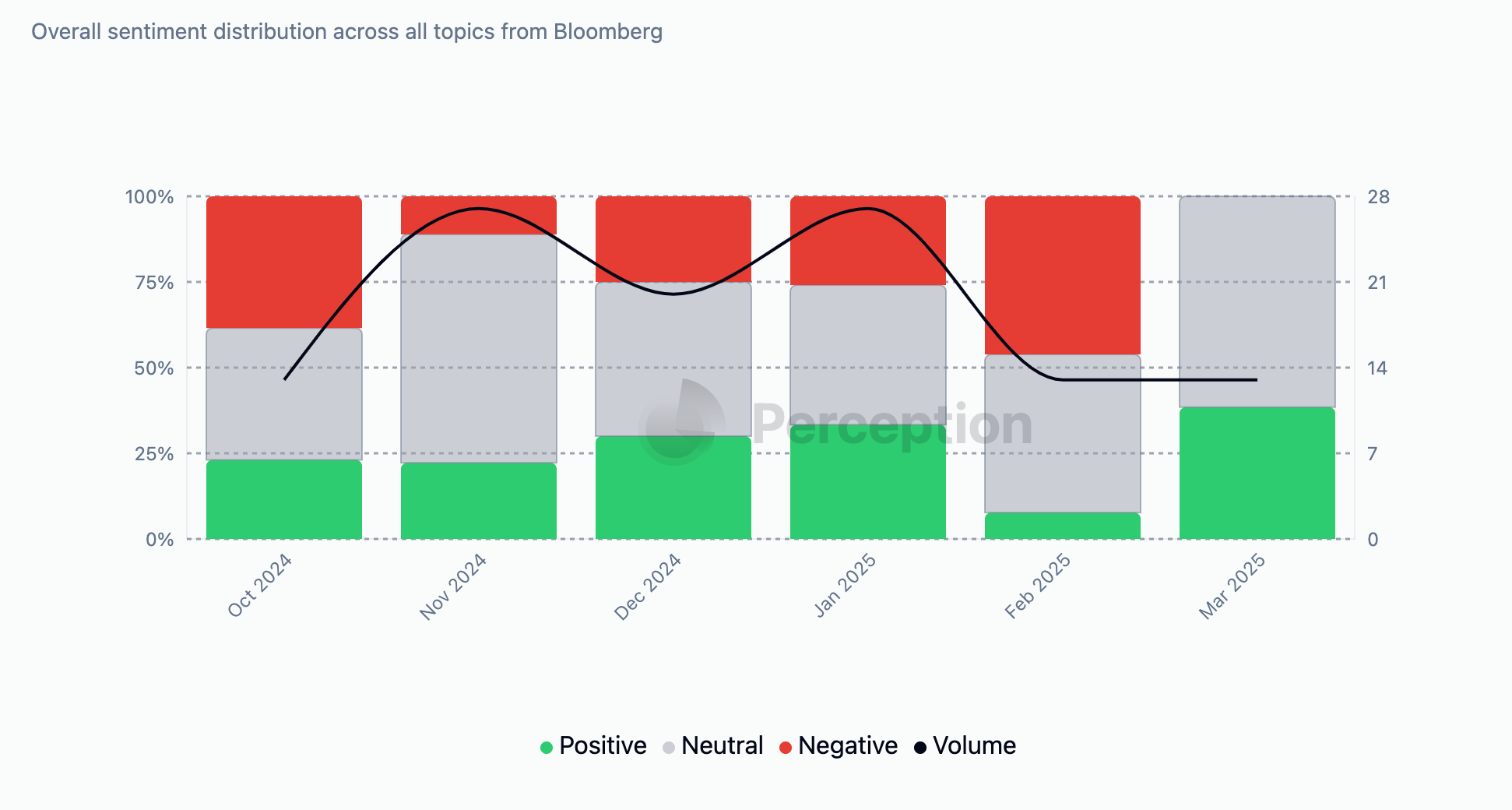
Financial Times
- 26.7% positive, 36.7% neutral, 36.7% negative
- Focus: investment vehicles, market analysis, mining, banking & finance, institutional adoption
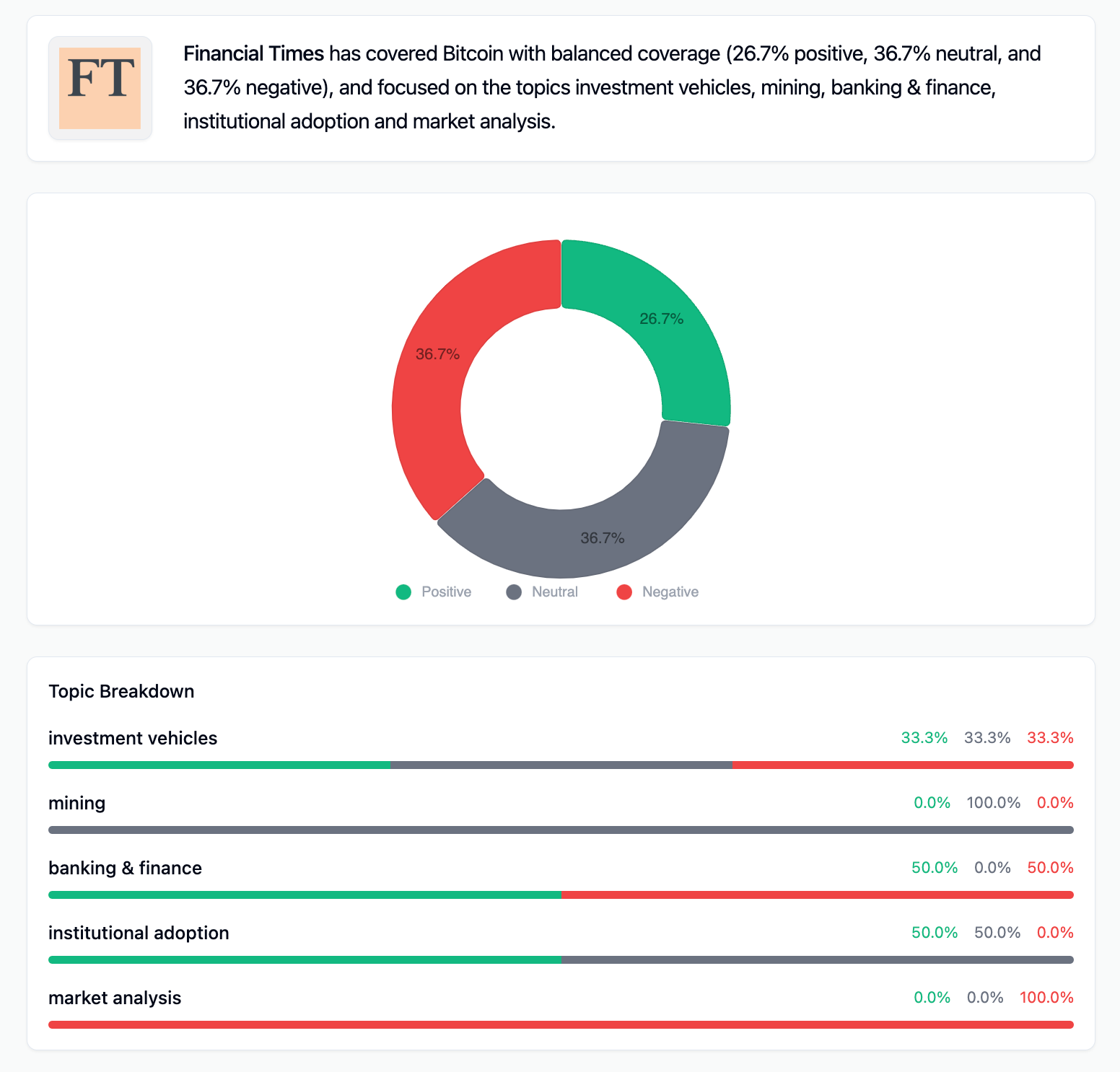
CNBC
- 22.1% positive, 63.2% neutral, 14.7% negative
- Broad coverage across banking, self-custody, crime, regulation, and market topics
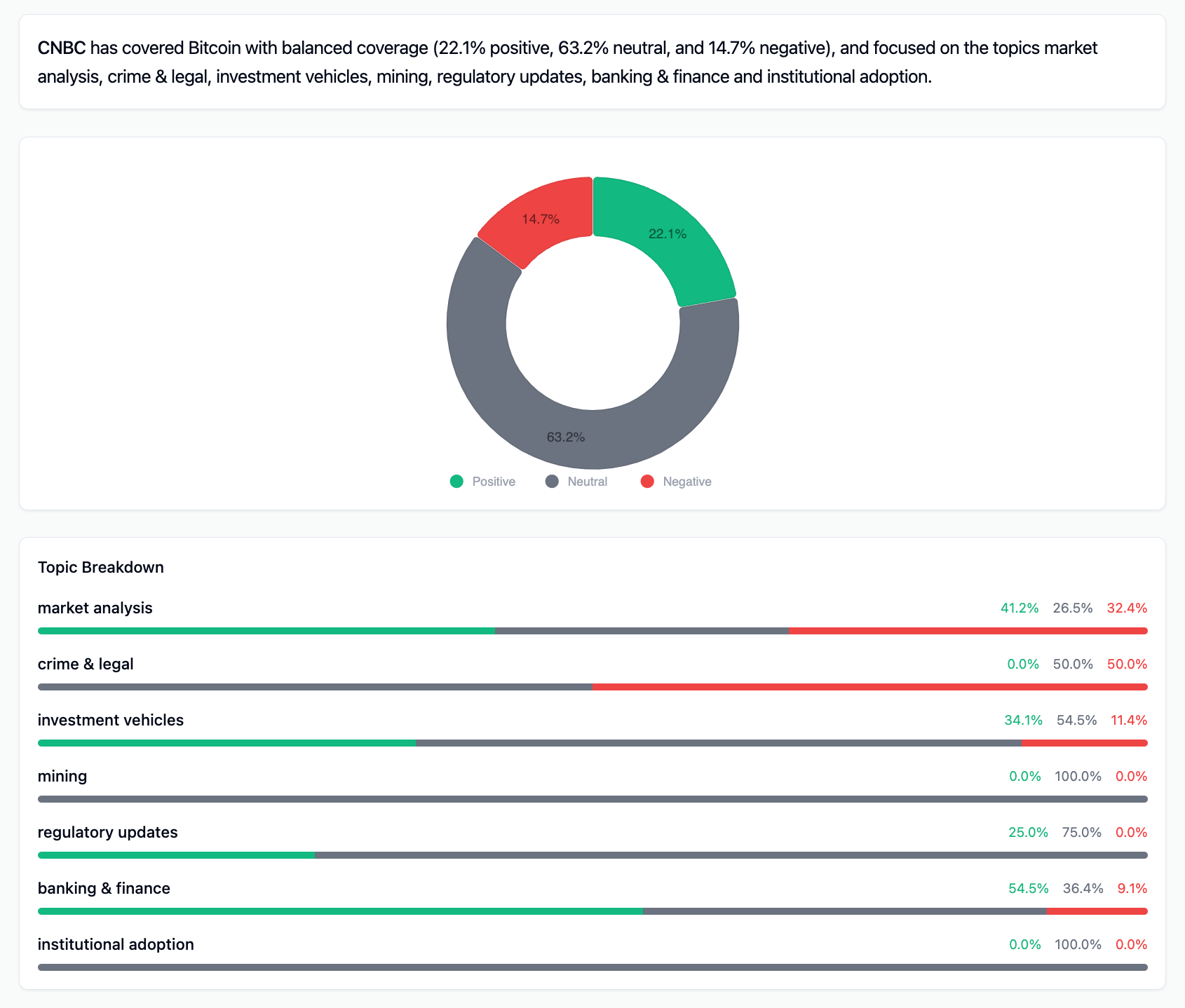
Forbes
- 49.2% positive, 17.1% neutral, 33.7% negative
- Most expansive topical range: from scaling to AI to energy, with strong coverage of use cases and retail adoption
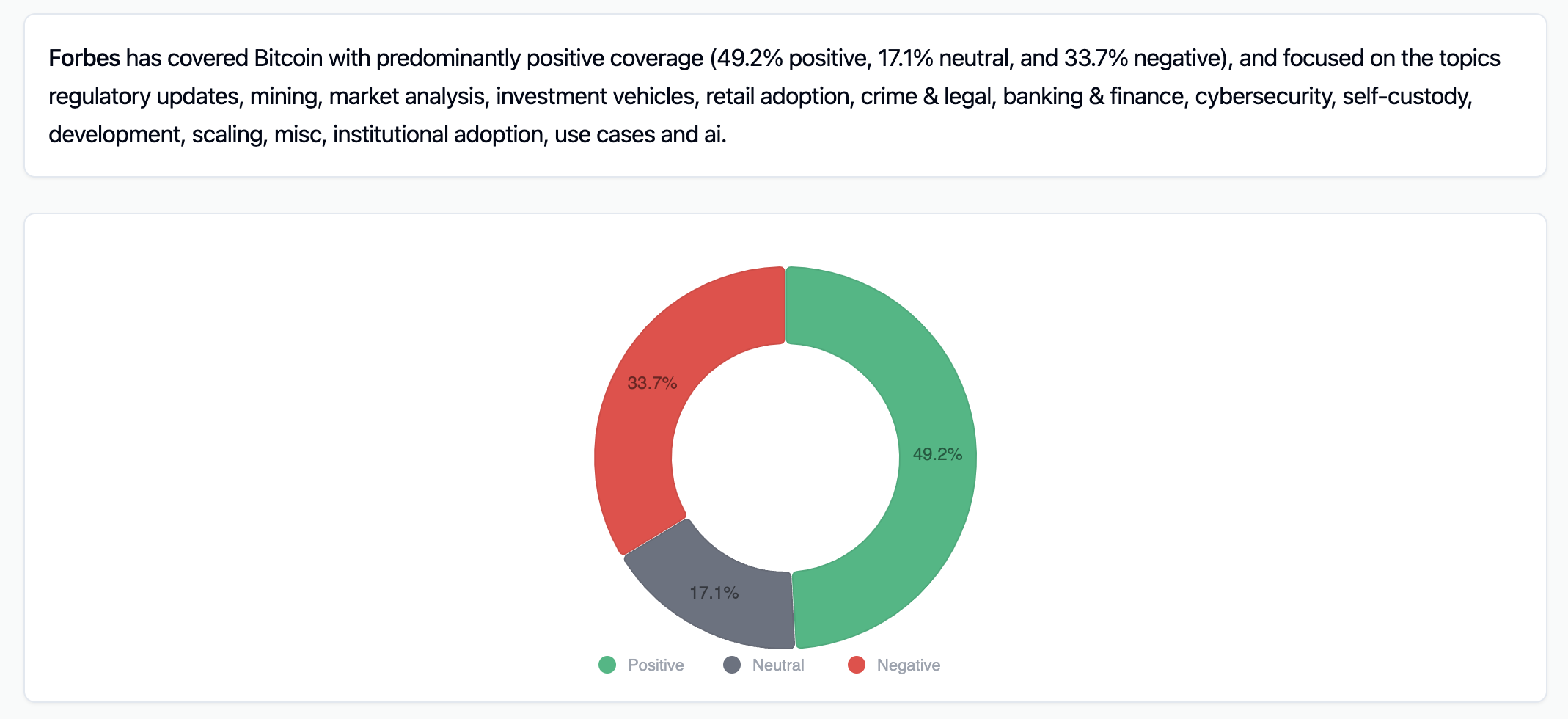
New York Times
- Notable tone shift: went full month in November with 0% negative coverage, then steadily increased negativity post-Trump inauguration
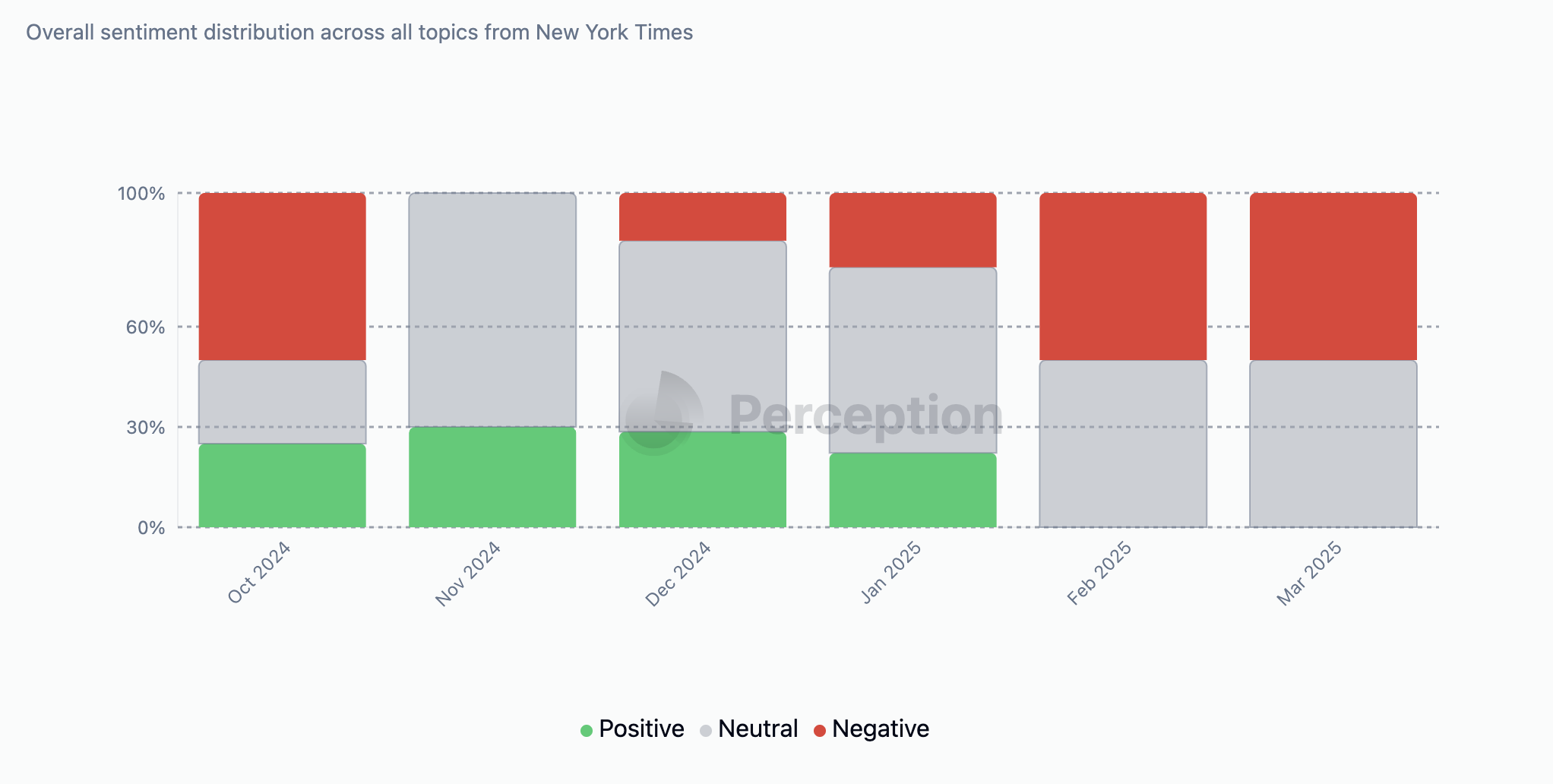
Macro Trends
📈 Topic Volume Shifts (Oct–Mar)
| Month | Use Cases | Scaling |
|---|---|---|
| Oct | 208 | 415 |
| Nov | 269 | 382 |
| Dec | 223 | 169 |
| Jan | 188 | 173 |
| Feb | 136 | 151 |
| Mar | 268 | 206 |
- Use Cases rebounded +97% in March, while Scaling saw a +36% recovery.
- Indicates revived community experimentation and new user onboarding.
Perception Index vs Price
- From Oct to Dec, the Perception Index grew exponentially—followed by price soon after.
- In March, the Index rose again even as price declined—a potential leading indicator for Q2.
- Low negative sentiment volume suggests downside pressure may be muted.
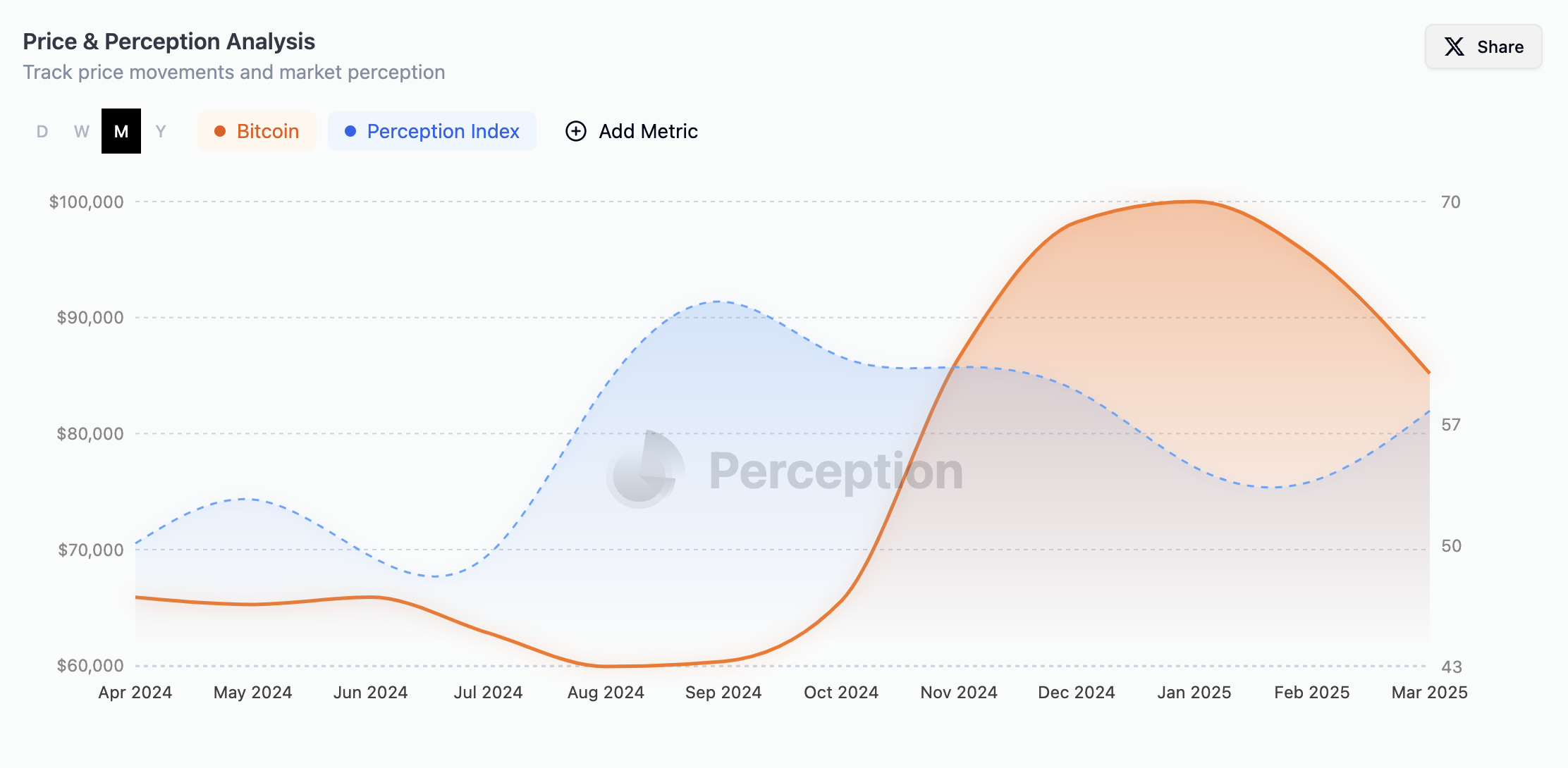
Institutional Outlook for Q2
- Expect a second wave of self-custody narratives, especially if macro volatility picks up.
- Monitor Perception Index as a signal, particularly in divergence from price—early signs look promising.
- Watch for re-entry of institutional narratives as new regulatory frameworks materialize.
- Cultural and retail adoption themes are gaining long-term strength—ignore them at your peril.
This report was prepared using real-time analysis of 100+ media and community sources, cross-channel sentiment tagging, and trend aggregation via Perception.
